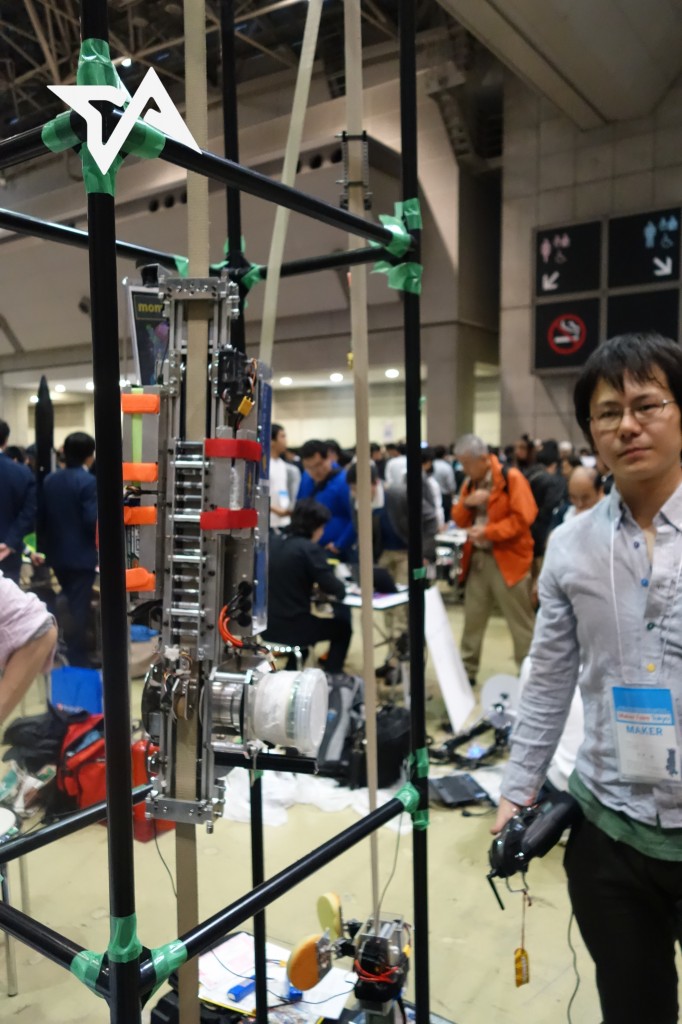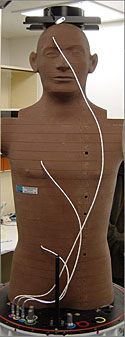 This edition of Weekend Walkabout takes us from a very cool Convention / Faire in Tokyo, Japan and then onto Central Europe (via the International Space Station) and finally winds up with the Kerbal Space Program…
This edition of Weekend Walkabout takes us from a very cool Convention / Faire in Tokyo, Japan and then onto Central Europe (via the International Space Station) and finally winds up with the Kerbal Space Program…
 First up is another trip to Japan – and to the recently held Maker Faire, “…the globe-trotting DIY convention that attracts both weekend hobbyists and high-end tinkerers…”. This web page has a number of very interesting photographs, ranging from a musical instrument called an Otamatone to neon samurai to virtually brushing an anime characters teeth via an Oculus VR headset to robots galore. Of course there is a “space elevator” (the 14th picture from the top if I counted correctly). The site takes forever to load – not sure why, but many of the pictures are worth the wait. I think this would have been a lot of fun to attend. The Maker Faire map page shows that these events are held all over the globe – you’re sure to find one near you in the near future…
First up is another trip to Japan – and to the recently held Maker Faire, “…the globe-trotting DIY convention that attracts both weekend hobbyists and high-end tinkerers…”. This web page has a number of very interesting photographs, ranging from a musical instrument called an Otamatone to neon samurai to virtually brushing an anime characters teeth via an Oculus VR headset to robots galore. Of course there is a “space elevator” (the 14th picture from the top if I counted correctly). The site takes forever to load – not sure why, but many of the pictures are worth the wait. I think this would have been a lot of fun to attend. The Maker Faire map page shows that these events are held all over the globe – you’re sure to find one near you in the near future…
 Next up is a trip to Europe (specifically central Europe) via the International Space Station – (ISS). One of the potential issues facing manned trips aboard a Space Elevator is prolonged exposure to cosmic radiation. An experiment (code-named MATROSHKA) was undertaken over several years on the ISS. A specialized mannequin was constructed, containing radiation sensors. This mannequin was then subjected to many years worth of radiation exposure on the ISS and the data was then sent to scientific labs in Poland, Germany and Austria for analysis. Their conclusion was “…that the individual dosimeters worn by the crew inside the ISS overestimated the actual dose measured inside the phantom by about 15%. However, in open space this overestimation exceeded 200%…” So, cautiously good news. However, as the analysts also pointed out “We must remember that measurements within the MATROSHKA experiment were performed at low Earth orbit where the Earth’s magnetosphere significantly reduces the number of charged particles from cosmic radiation. In interplanetary space there is no such shielding”. Once again, I am indebted to the most-excellent SpaceRef newsletter for this story.
Next up is a trip to Europe (specifically central Europe) via the International Space Station – (ISS). One of the potential issues facing manned trips aboard a Space Elevator is prolonged exposure to cosmic radiation. An experiment (code-named MATROSHKA) was undertaken over several years on the ISS. A specialized mannequin was constructed, containing radiation sensors. This mannequin was then subjected to many years worth of radiation exposure on the ISS and the data was then sent to scientific labs in Poland, Germany and Austria for analysis. Their conclusion was “…that the individual dosimeters worn by the crew inside the ISS overestimated the actual dose measured inside the phantom by about 15%. However, in open space this overestimation exceeded 200%…” So, cautiously good news. However, as the analysts also pointed out “We must remember that measurements within the MATROSHKA experiment were performed at low Earth orbit where the Earth’s magnetosphere significantly reduces the number of charged particles from cosmic radiation. In interplanetary space there is no such shielding”. Once again, I am indebted to the most-excellent SpaceRef newsletter for this story.
 Finally, we visit the Kerbal Space Program. This software package is described as “KSP is a game where the players create and manage their own space program. Build spacecraft, fly them, and try to help the Kerbals to fulfill their ultimate mission of conquering space.” This seems to be like a Microsoft Flight Simulator for spacecraft. I had run across this many months ago, but as I didn’t see a way to build a space elevator with it, I passed it by. However, I’ve recently found a YouTube video from someone (Mr. Scott Manley) who has tried to build a space elevator with this program. As Scott describes his efforts to (ultimately unsuccessfully) build a space elevator with KSP, he talks about how a real space elevator would work. Some of his facts and terminology are incorrect, but enough of it is on target to make the whole exercise (IMHO) interesting.
Finally, we visit the Kerbal Space Program. This software package is described as “KSP is a game where the players create and manage their own space program. Build spacecraft, fly them, and try to help the Kerbals to fulfill their ultimate mission of conquering space.” This seems to be like a Microsoft Flight Simulator for spacecraft. I had run across this many months ago, but as I didn’t see a way to build a space elevator with it, I passed it by. However, I’ve recently found a YouTube video from someone (Mr. Scott Manley) who has tried to build a space elevator with this program. As Scott describes his efforts to (ultimately unsuccessfully) build a space elevator with KSP, he talks about how a real space elevator would work. Some of his facts and terminology are incorrect, but enough of it is on target to make the whole exercise (IMHO) interesting.
That’s all for this week!
